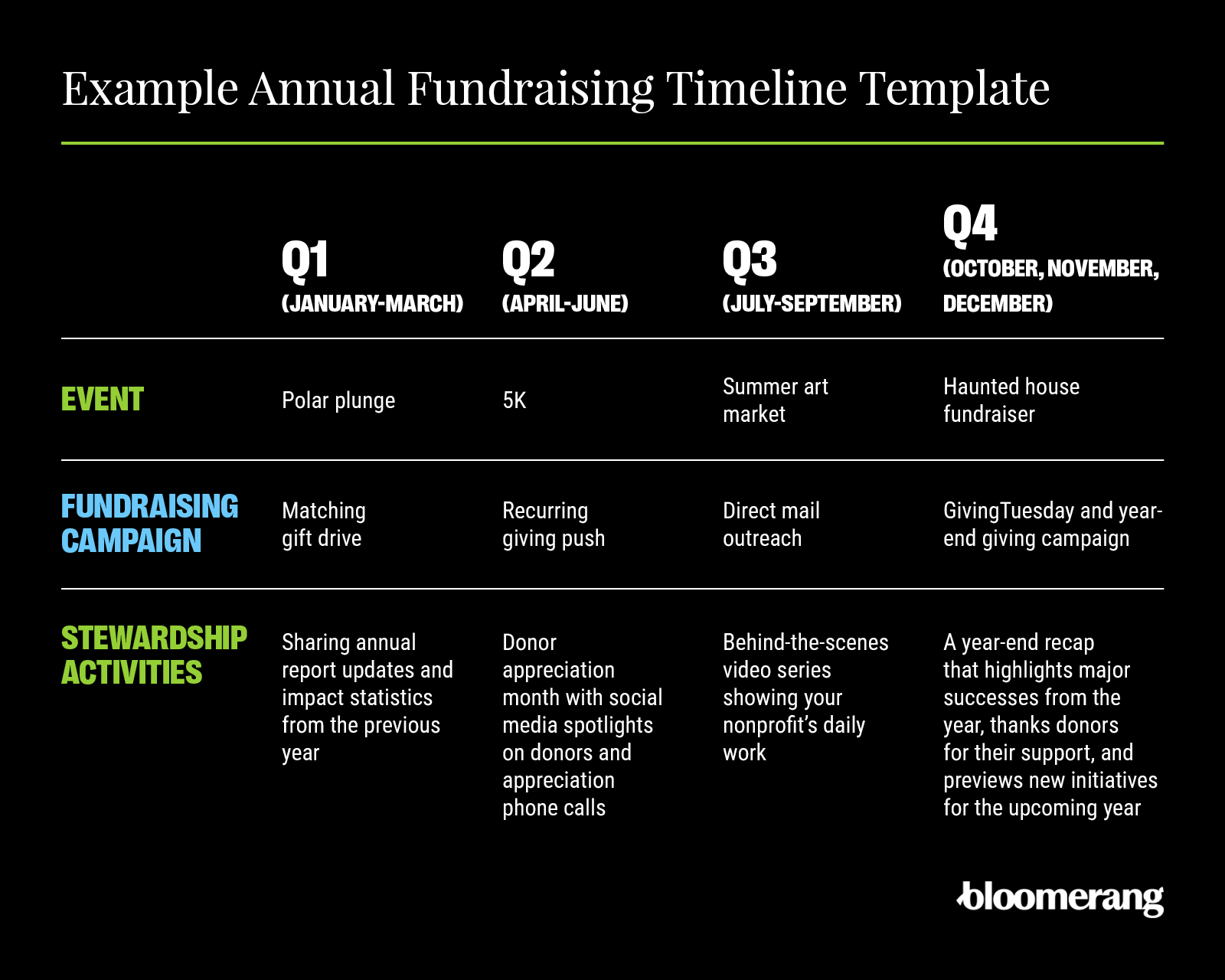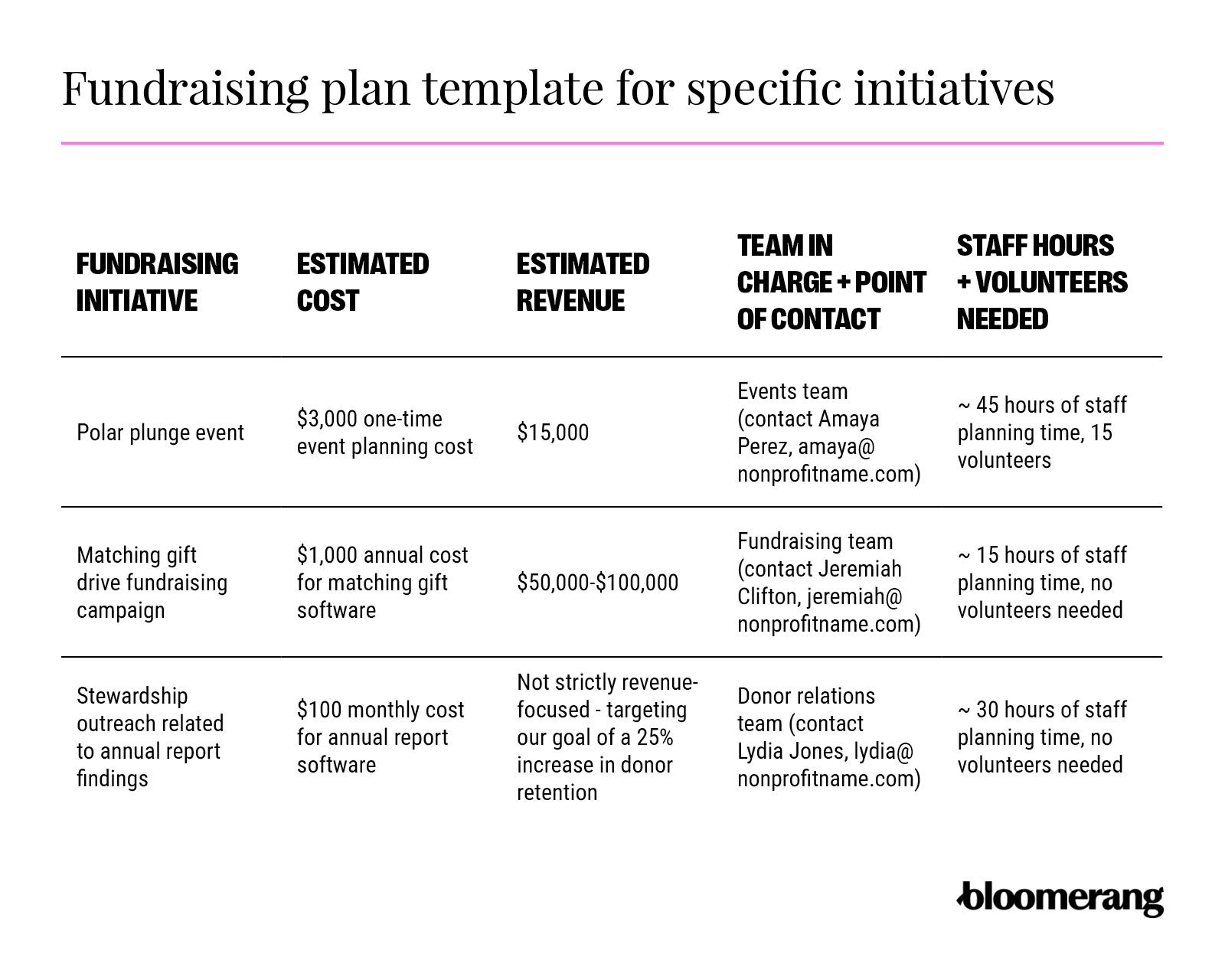How to Write a Nonprofit Fundraising Plan: Free Template


Nonprofits with written fundraising plans consistently outperform organizations without them. However, many nonprofits lack these important guiding strategies. For example, according to a NonprofitPRO survey, 56% of nonprofit leaders said their organizations don’t have a donor management system, an essential part of a fundraising plan.
A fundraising plan defines clear goals, keeps your team on track, provides accountability, and ultimately helps you raise more for your cause. But where should you start when writing your plan?
In this quick guide, we’ll explain the crucial steps your team needs to take to build your fundraising plan. Here’s what we’ll cover:
It’s no secret that nonprofits fail often. But having a solid fundraising plan in place reduces the likelihood of failure exponentially.
Creating a plan sets your organization up to achieve its goals methodically with the right fundraising strategies, technology, and team collaboration.
A study by Concord Leadership Group found that nonprofits with a written strategic plan were more likely to:
A strategic plan gives your nonprofit the foundation it needs to scale up its efforts effectively. When your team feels confident in your plan, they’re able to refocus their efforts where they matter most: your mission and helping your community.
While every fundraising plan looks a bit different, they all involve the same planning steps and core components. Explore these key steps to build a reliable, robust fundraising plan.
The first step in making a fundraising plan isn’t thinking about the future—it’s taking stock of your past. Establishing a baseline rooted in past successes and failures allows you to set measurable, realistic goals.
Look back at your previous fundraising initiatives and outreach campaigns to assess your strengths, challenges, and opportunities. Ask yourself these questions:
Answer these questions and review the data from past campaigns to understand where your organization currently stands and how you can build on past performance.
Writing down your goals encourages you to clarify objectives and identify the tasks and timeline needed to complete them. The best goals are SMART goals: specific, measurable, achievable, relevant, and time-bound.
Here are a few examples of SMART goals you might set for your organization:
Define your goals by looking at your past performance and your nonprofit’s future growth plans. What can you reasonably achieve with your current tools and capacity?
Your nonprofit’s case for support is the reason you give for why donors should contribute to your cause. When building a fundraising plan, it helps to have a solid case for support you can rely on to craft your fundraising and marketing initiatives.
When you organize your messaging around a guiding idea or theme, you’ll have an easier time communicating why donors should support you and what their support will accomplish.
Refresh your organization’s case for support by:
Once you’ve revamped your case for support, you can incorporate it into your email, social media, and direct mail campaigns, as well as your in-person donor meetings.
What are the actual fundraising initiatives, campaigns, or events you’re going to launch in order to reach your defined goals? For example, you might decide to plan:
Choose your fundraising initiatives based on events and campaigns you’ve had the greatest success with in the past, as well as what you think supporters will be most interested in moving forward.
For instance, you might have held most of your fundraising events in person in the past, but recently discovered that supporters are interested in attending virtual or hybrid events. You can incorporate these event types more moving forward to appeal to supporters’ current preferences.
A strong fundraising plan should also identify the marketing channels you’ll use to get the word out about your fundraising initiatives. These marketing channels might include:
Review your donor profiles and marketing engagement analytics to determine your target audience’s preferred communication platforms. Then, focus your efforts on those channels to connect with the right people. This process allows you to focus on marketing channels that will deliver a higher return on investment (ROI) for your campaign.
The next step in crafting your fundraising plan is assigning responsibilities to your staff, board members, and other volunteers and adding them to a calendar.
Your fundraising plan should clearly define:
With a clear plan, you ensure all team members are on the same page and aligned on your priorities. However, that doesn’t mean your plan has to be set in stone.
Unexpected circumstances and challenges frequently arise during the implementation of any strategy, along with new opportunities you might not have considered. Keep your plan flexible and adjust it as needed to account for these obstacles and opportunities.
To carry out your fundraising plan effectively and efficiently, you’ll need the support of dedicated fundraising tools, including platforms like your:
If you lack any of these solutions and are looking to expand your technology stack, choose solutions that integrate with your existing software. Integrations allow for streamlined data migrations and keep all of your fundraising activities under one roof.
Or, better yet, look for a unified giving platform that brings together multiple fundraising tools—online donation solutions, CRM software, marketing and engagement solutions, etc.—into one easy-to-use platform (like Bloomerang!).
Here’s an example of a quarterly fundraising timeline template with unique opportunities for events, fundraising campaigns, and stewardship activities each quarter.

This template will help you zoom in on a specific campaign or event to ensure you’re accounting for all the tasks and activities that will be required to push the initiative forward.

What if you could raise more without doing more? Bloomerang’s fundraising tools were built to fit how your nonprofit works. No matter how you choose to structure your fundraising plan, our purpose-built solutions can support your efforts.
Our giving platform offers the following features to support year-round fundraising:
Watch this video to learn how Bloomerang’s fundraising tools helped one nonprofit rally supporters to raise over a million dollars in just one week:
As you can see, Bloomerang offers the supportive infrastructure you need to maximize your current fundraising initiatives. Whether you want to grow major gifts, increase recurring giving, or boost your annual fund, our fundraising software can meet you where you are to grow your impact.
Remember to use impact metrics to track the success of your fundraising plan throughout the year. Helpful data points include donor retention, average gift size, fundraising event participation, and revenue from different initiatives. Keeping a close eye on these key performance indicators will empower you to grow from your mistakes and capitalize on your strengths.
Looking for more information about creating and carrying out an effective fundraising plan? Review Bloomerang’s additional resources on the topic:
Comments
Jane Baxter Lynn
This is an excellent, fundamental approach that any size nonprofit can implement.